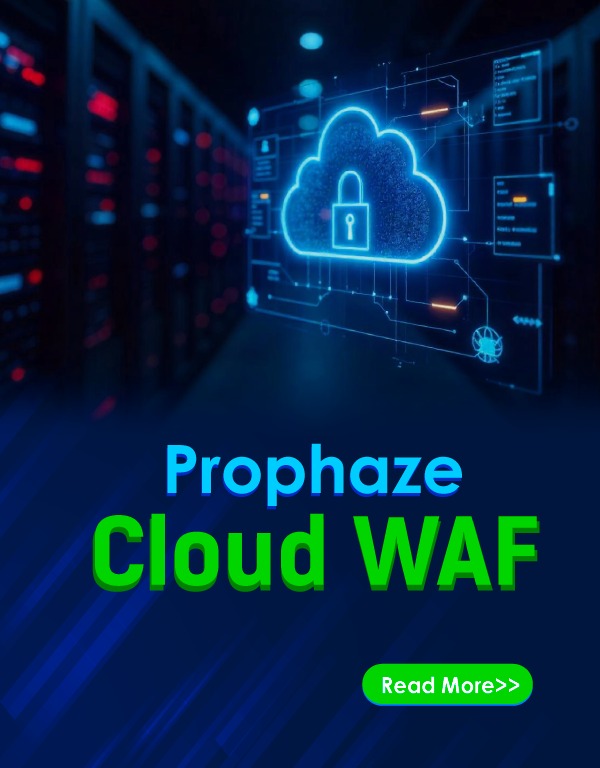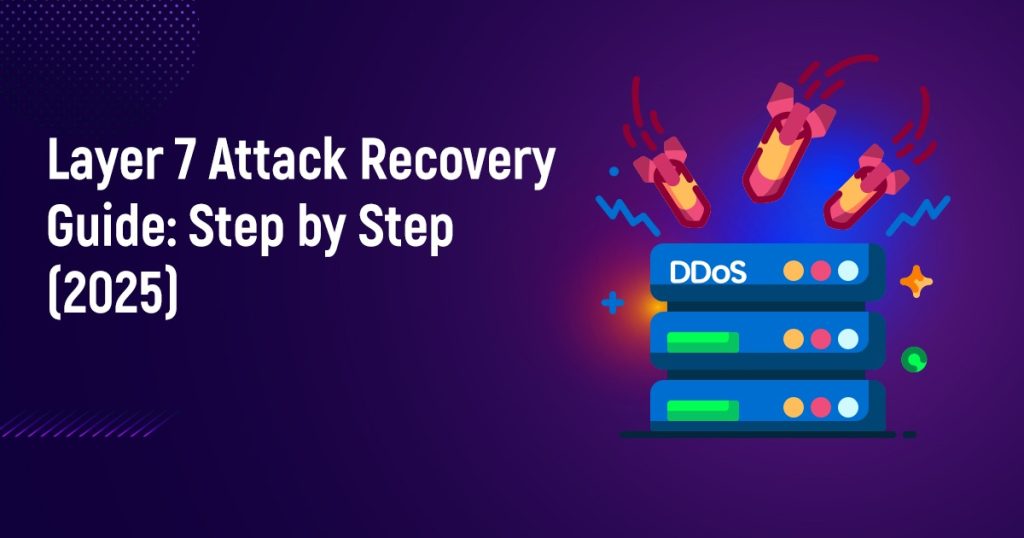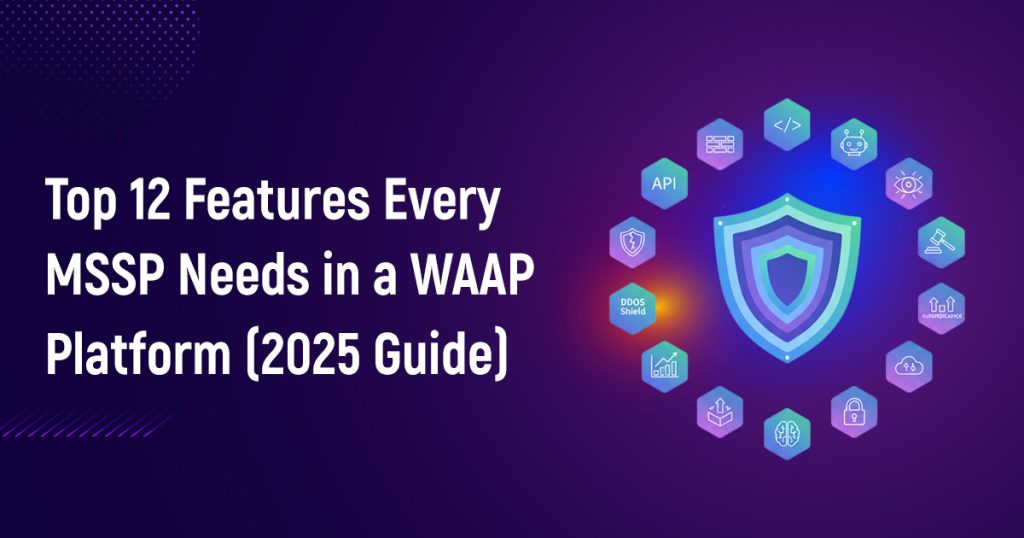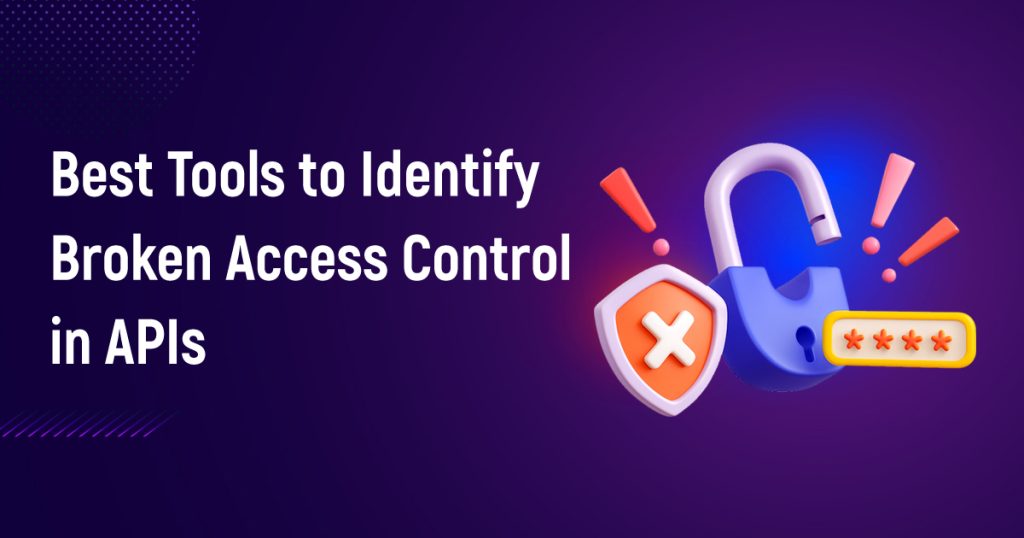What Is an Advanced WAF Security Policy?
- 6.2k Views
- 9 min. read
Introduction
In today’s complex digital environment, strong web application security is more critical than ever. As cyber threats continue to advance, businesses must employ sophisticated protection tactics to shield their sensitive data, applications, and user interactions. A key strategy in this effort is establishing an advanced Web Application Firewall (WAF) security policy.
An advanced WAF security policy surpasses basic protections, delivering customizable and detailed defense mechanisms suited to specific application requirements. These policies increase security by addressing various threats, such as bot attacks, credential stuffing, and data breaches. This article will examine what constitutes an advanced WAF security policy, its components, and its significance in contemporary web application security. For a basic overview, refer to our article on what a WAF is.
What is an Advanced WAF Security Policy?
A Web Application Firewall (WAF) is a security mechanism that monitors and filters incoming HTTP/HTTPS traffic between a web application and the Internet. Its main objective is to protect web applications from harmful traffic and potential threats. While traditional WAFs provide a basic layer of defense by blocking known dangers, advanced WAF policies offer more nuanced protection, featuring detailed traffic control, real-time threat intelligence, and adaptability to changing attack strategies.
Advanced WAF security policies extend beyond mere rule sets, allowing for tailored configurations. These policies are crafted to counteract a wide range of intricate threats, particularly those aimed at specific vulnerabilities within web applications. With robust WAF security, organizations can preemptively guard against sophisticated assaults while ensuring their applications’ performance and functionality remain intact. Understanding the common WAF limitations is crucial for appreciating advanced solutions.
Key Components of an Advanced WAF Policy
An advanced Web Application Firewall (WAF) security policy consists of several key components, each designed to address specific aspects of web application security. These components include:
1. Granular Rule Customization
Advanced WAFs enable users to create rules based on specific criteria, such as IP addresses, HTTP headers, and cookies. This level of detail allows security professionals to configure the WAF precisely for their unique application environments.
2. Threat Intelligence Integration
Many advanced WAFs integrate with external threat intelligence feeds to stay informed about emerging threats. With the support of AI-powered WAF technology, modern WAF systems can automate detection and response, facilitating real-time mitigation of attacks.
3. Bot Management
Malicious bots pose a significant threat to modern web applications, capable of scraping data, launching Distributed Denial of Service (DDoS) attacks, and conducting credential stuffing. Advanced WAF policies can differentiate between legitimate bot traffic and harmful actors by employing a comprehensive WAF rule framework for behavior analysis.
4. Credential Stuffing Protection
Credential stuffing occurs when attackers use stolen usernames and passwords to gain unauthorized access to user accounts. A well-structured WAF policy can significantly mitigate this threat by detecting suspicious access patterns.
5. API Protection
As APIs become increasingly vital to powering web applications, API security is essential. Advanced WAFs provide targeted protections for APIs by blocking malicious traffic and enforcing strict security rules for each endpoint.
6. Detailed Logging and Reporting
One of the main advantages of advanced WAF policies is their detailed logging and reporting capabilities. This visibility is crucial for understanding how hackers might bypass a WAF and for adapting defenses accordingly.
7. Declarative Policies
Some advanced WAF solutions support declarative policies, allowing security teams to define WAF rules in a code-based format. This structure is particularly valuable for WAF detecting new threats without the need for manual updates.
How Advanced WAF Policies Differ from Basic WAF Configurations
Both basic and advanced Web Application Firewalls (WAFs) have the same primary purpose: to protect web applications. However, they differ significantly in their capabilities and sophistication.
1. Rule Flexibility
Basic WAFs typically rely on predefined, one-size-fits-all rules. In contrast, advanced WAFs support dynamic defenses that can counteract WAF evasion techniques, which exploit weaknesses in generic rule sets.
2. Advanced Threat Mitigation
Advanced WAFs come equipped with features like real-time threat intelligence and bot management. They also offer greater control over IP blacklisting in WAF, enabling more effective isolation of suspicious sources.
3. Enhanced Reporting and Analytics
Advanced WAFs provide granular reporting that allows security professionals to analyze access attempts. This enables the implementation of IP whitelisting in WAF, ensuring trusted users can maintain access while blocking potential attackers.
4. Integration with Other Security Tools
Advanced WAFs can work in conjunction with intrusion detection systems and utilize WAF behavioral analysis. This helps monitor anomalies and correlate them with known attack signatures, enhancing overall security.
Benefits of Using an Advanced WAF Security Policy
Implementing an advanced Web Application Firewall (WAF) security policy offers several benefits for enhancing web application security:
1. Proactive Threat Prevention
Advanced policies analyze traffic contextually, enabling the WAF to block threats before they can exploit vulnerabilities.
2. Reduced False Positives
Advanced algorithms decrease the likelihood of WAF false positives, ensuring that legitimate users can access resources without interruption.
3. Protection for APIs and Mobile Applications
These policies provide comprehensive protection and may offer Zero-Day Protection by continuously adapting to undisclosed vulnerabilities.
4. Regulatory Compliance
Granular rule configurations and enhanced logging capabilities assist organizations in achieving compliance. Additionally, understanding the different types of WAF can guide organizations in selecting the most suitable deployment model for compliance needs.
Real-World Scenarios of Advanced WAF Security
Let’s take a look at some of the real-world applications and scenarios of Advanced WAF Security Policy:
1. Example 1: Credential Stuffing Protection
An advanced Web Application Firewall (WAF) can effectively detect attempts at credential abuse early on, even if the attackers are subtle. It is essential to understand what a WAF false negative is, as missing an attack can be just as damaging as blocking legitimate traffic.
2. Example 2: API Security for a Mobile App
By understanding how a WAF protects against SQL injection, developers can configure the WAF to safeguard backend services from data manipulation attacks.
Challenges in Deploying Advanced WAF Policies
While advanced WAF (Web Application Firewall) security policies provide numerous benefits, there are some challenges to consider:
1. Complex Configuration
The integration of machine learning and anomaly detection means that fully configuring the system requires an understanding of what WAF machine learning is and how it affects policy tuning.
2. Performance Impact
Although advanced WAFs aim for efficiency, knowing what a WAF signature is can help you fine-tune which detection patterns should be prioritized and which can be safely ignored.
3. Resource Intensive
Advanced policies may identify what a WAF vulnerability is during traffic analysis. Responding to this information requires a dedicated security team and clearly defined workflows.
Advanced WAF in a Multi-Layered Security Strategy
Advanced Web Application Firewall (WAF) security policies do not function in isolation; they work alongside other security layers, such as network firewalls and intrusion detection systems. Together, these layers create a strong and overlapping defense mechanism. For example, understanding how a WAF blocks XSS attacks can help align WAF protections with browser-based security headers and application-level input validation.
Why an Advanced WAF Security Policy is Critical in 2025
What is an advanced WAF (Web Application Firewall) security policy? It is a proactive, customizable, and intelligent defense mechanism that enables organizations to stay ahead of evolving attack vectors. Advanced WAF policies come with features such as threat intelligence integration, bot management, API protection, and behavior-based detection, offering far more than traditional rule sets.
By implementing advanced WAF security policies, businesses can defend against known threats while also preparing for zero-day vulnerabilities and complex evasion techniques. When configured correctly, these policies enhance security posture without compromising application performance or user experience.
For organizations looking to secure their digital assets, understanding and deploying advanced WAF policy configurations is not just best practice; it’s a necessity.
Prophaze Intelligent Protection for Web Applications
In the constantly evolving landscape of web application threats, Prophaze WAF 3.0 offers an advanced, AI-driven approach to security. Unlike traditional web application firewalls (WAFs) that rely on static rule sets, Prophaze utilizes adaptive profiling and machine learning to dynamically analyze and respond to threats in real-time. This capability ensures strong protection against a wide range of attacks, including the OWASP Top 10 vulnerabilities, zero-day exploits, and sophisticated bot intrusions.
Prophaze WAF 3.0 seamlessly integrates with various environments—whether cloud-based, on-premises, or in Kubernetes—providing organizations with the flexibility to implement comprehensive security measures without disrupting their existing infrastructure. Its user-friendly dashboard provides real-time insights and control, allowing security teams to monitor threats and adjust policies quickly and efficiently. By automating policy management and threat detection, Prophaze alleviates the operational burden on security teams, enabling them to concentrate on more strategic initiatives.
For organizations looking to enhance their web application security posture, Prophaze WAF 3.0 delivers an advanced, intelligent solution that adapts to emerging threats, ensuring resilient and continuous protection in today’s dynamic cyber threat environment.
Next
Recent Blog Post
Layer 7 Attack Recovery Guide: Step by Step (2025)
September 23, 2025
Top 12 Features Every MSSP Needs in a WAAP Platform (2025 Guide)
September 10, 2025
Top 8 Cybersecurity Challenges Indian Enterprises Face in 2025
September 10, 2025
Best Tools to Identify Broken Access Control in APIs
August 25, 2025







